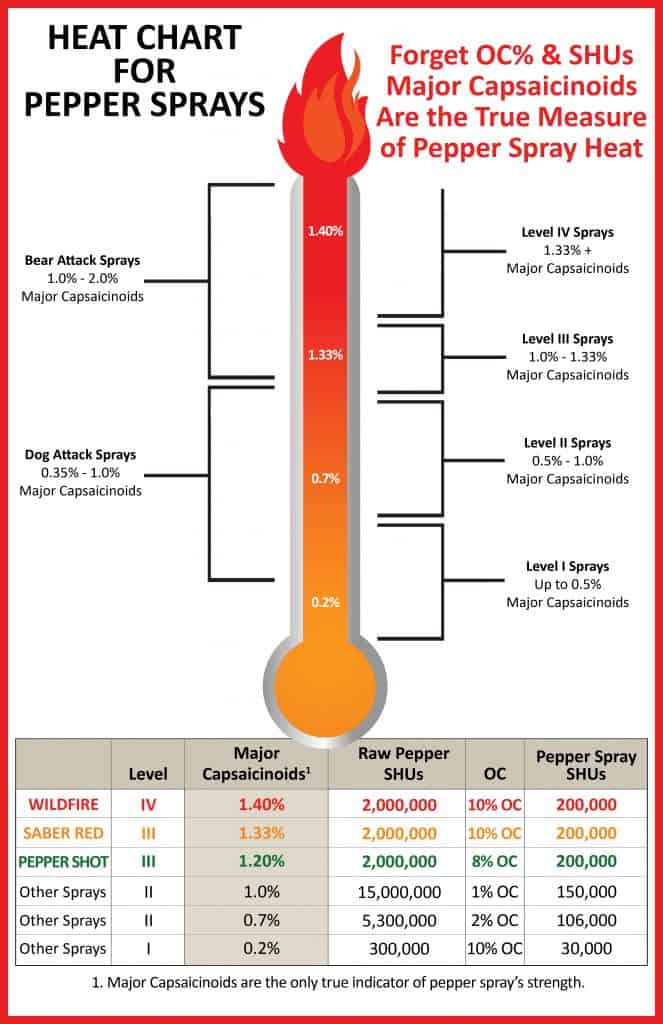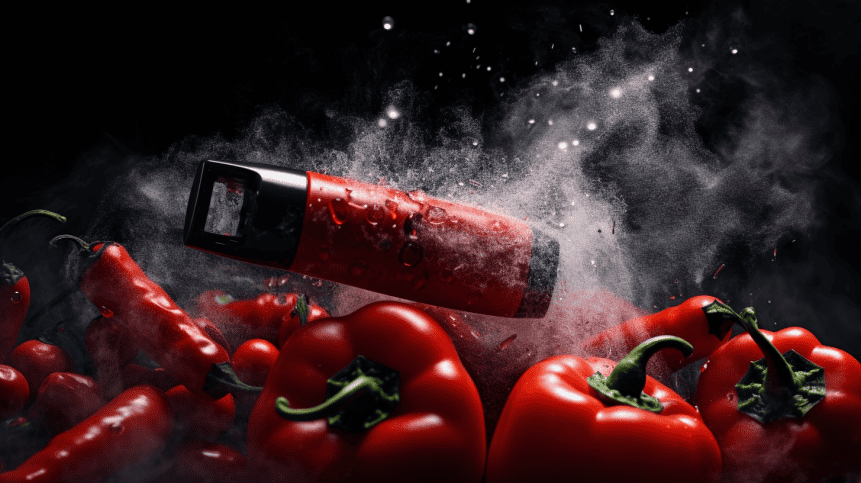The MC percentage is the only accurate indicator of hotness in pepper spray. You do not see how strong the pepper spray is without knowing the MC level.
There are no federal guidelines for the production or labeling of pepper sprays. This is why manufacturers can make unchecked claims without any federal regulation.
The OC and SHU percentages used on packaging have no bearing on the hotness of a particular spray! Beware of other manufacturer’s claims. Please read the specifications before making a purchase. Many brands will not provide information about their products’ MC percentages.
Capsaicinoids are a group of chemicals that produce the spicy flavor and sensation in chili peppers. They are also called capsaicinoids or capsaicin—the most critical one is Capsaicin, the main ingredient in pepper spray. Capsaicin is not a solvent: it cannot dissolve in water. It can only mix with oil or fat, which dissolves in water.
Significant capsaicinoids need to mix with oil or fat because capsaicin disperses poorly in water, requiring the fatty medium to dissolve its molecules.
What are Scoville heat units?
The Scoville Scale measures the intensity or spiciness of hot peppers. Wilbur Glenn Scoville developed it during the early 1900s to compare pepper potencies, and it rates their heat on a scale from 0 (no detectable heat) to over 1000000 SHU.
Hot pepper is rated at a certain number of Scoville Heat Units (SHU), and this SHU rating measures the concentration of capsaicinoids in that pepper. The more heat-producing chemicals, like a pepper’s capsaicinoid concentrations, the higher its SHU rating will be.
For instance, the Carolina Reaper pepper is the hottest pepper on the planet, containing 2,200,000 SHU. That is why I’m a little dubious about claims of 3 or 5 million SHU that some pepper spray brands make.
Some pepper spray brands use OC Percentage to sell their spray.
Many brands tout a higher percentage of oleoresin capsicum (OC) as the deciding factor in their pepper spray, but this statement has many shortcomings.
The OC percentage is the concentration of capsaicinoids in any pepper spray, so it’s not a specific number.
And even if you have an OC percentage higher than what you’ll find on other brands, many factors are at play when determining how hot a pepper spray will actually feel.
But this percentage only measures the amount of pepper within the spray instead of indicating how hot it is.
What about Scoville Heat Units (SHU) as a way to determine how hot a spray is?
Some manufacturers advertise the SHU of raw peppers, not the actual percentage of their pepper spray formulation. The SHU of the raw peppers is highly diluted in the pepper spray formula and, therefore, not an accurate measure of capsaicin levels.
Major capsaicinoids are the accurate heat measure.
You should look for a pepper spray with at least an MC percentage of 1% – 1.4%.
WARNING: Do not purchase pepper spray without checking the content of major capsaicinoids.

